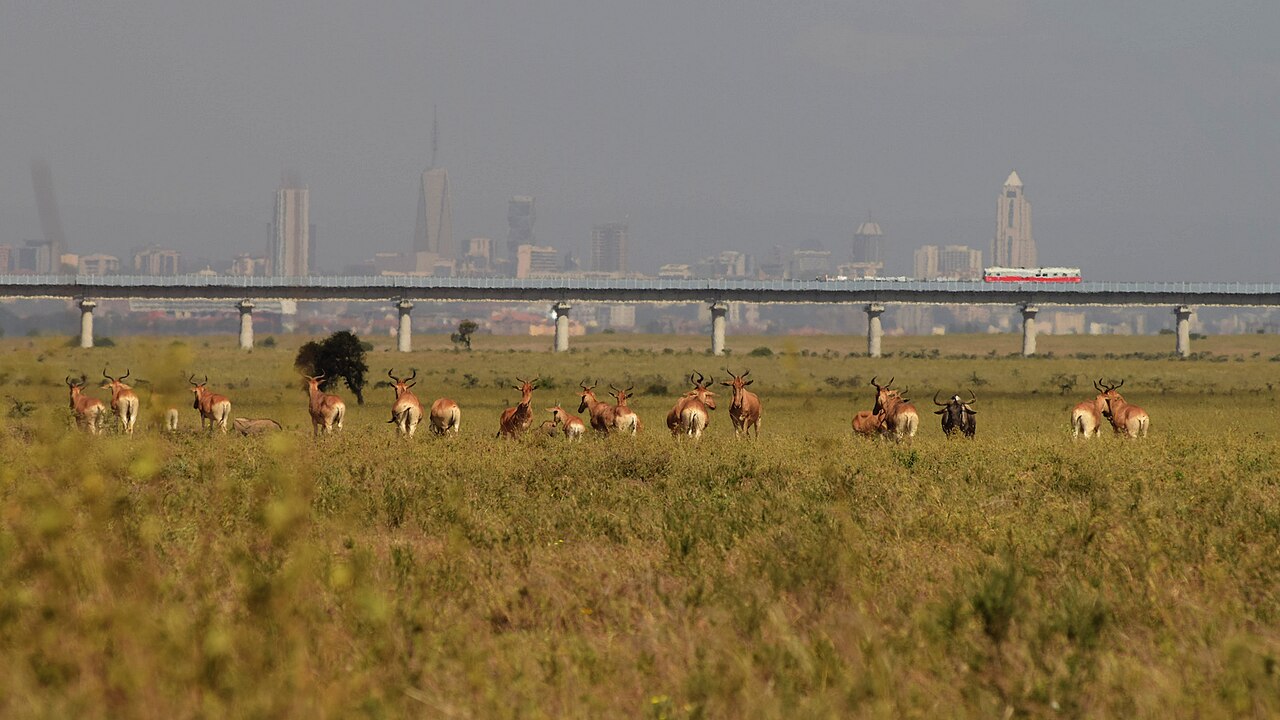Nairobi National Park
Nairobi National Park: A Unique Urban Wildlife Experience
Nairobi National Park is a remarkable wildlife haven located just a short drive from the bustling capital city of Kenya. Established in 1946, this unique park spans approximately 117 square kilometers and is the first national park in the world situated within a major city. Nairobi National Park is known for its diverse ecosystems, including savannahs, wetlands, and rocky valleys, providing a sanctuary for a wide variety of wildlife and offering visitors an incredible opportunity to experience nature in close proximity to an urban environment.
A Diverse Range of Wildlife
One of the standout features of the park is its impressive array of wildlife. Despite its urban setting, the park is home to over 100 species of mammals, including the iconic African “Big Five”: lions, leopards, elephants, and buffaloes. Visitors to the park can embark on thrilling game drives, where they have the chance to observe these magnificent animals in their natural habitat.
- Black Rhinos: The park is particularly known for its successful conservation efforts for the endangered black rhino. Nairobi National Park has one of the highest densities of black rhinos in the world, making it an ideal destination for those wishing to see these magnificent creatures up close.
- Lions and Other Predators: The park is also home to a healthy population of lions, often spotted resting under acacia trees or on rocky outcrops. Other predators, such as leopards and hyenas, can also be seen, making it an exciting location for wildlife enthusiasts.
Birdwatching in Nairobi National Park
Nairobi National Park is a birdwatcher’s paradise, boasting over 400 species of birds, including both resident and migratory species. The diverse habitats within the park, from grasslands to wetlands, provide ideal conditions for a variety of birdlife. Some notable species include the African fish eagle, secretary bird, and various herons and storks.
The park’s Nairobi Wetlands are particularly significant for birdwatching, attracting a multitude of waterfowl and providing excellent opportunities for photography and observation. Whether you are an avid birdwatcher or a casual observer, Nairobi National Park offers a unique chance to spot an incredible variety of birds.
Scenic Landscapes and Natural Beauty
One of the most striking aspects of Nairobi National Park is its stunning landscapes, characterized by open grasslands, scattered acacia trees, and rocky hills. The park’s proximity to the city creates a fascinating contrast between urban life and the tranquility of nature, offering visitors picturesque views of both the wildlife and the Nairobi skyline.
The park’s varied ecosystems are home to a wide range of plant species, contributing to its rich biodiversity. Visitors can enjoy guided nature walks to explore these beautiful landscapes up close and learn about the flora and fauna that thrive in the park.
Conservation and Sustainability
Nairobi National Park plays a crucial role in conservation efforts in Kenya, particularly in protecting endangered species such as the black rhino. The park serves as a vital refuge for wildlife that might otherwise be threatened by urban development and habitat loss.
Efforts to promote sustainable tourism in the park are essential for maintaining its ecosystems. Park entrance fees contribute directly to conservation initiatives and community development, ensuring that both wildlife and local communities benefit from tourism.
Unique Attractions within the Park
In addition to its abundant wildlife, the park offers several unique attractions for visitors. The David Sheldrick Wildlife Trust is located on the park’s outskirts and is dedicated to the rescue and rehabilitation of orphaned elephants. Visitors can learn about the organization’s conservation efforts and even adopt an elephant, supporting the important work being done to protect these magnificent animals.
Another highlight is the Giraffe Centre, where visitors can interact with the endangered Rothschild’s giraffe. The center provides educational programs on giraffe conservation and allows guests to feed and learn about these gentle giants up close.
Accessibility and Visitor Experience
One of the many advantages of Nairobi National Park is its accessibility. Located just a 30-minute drive from Nairobi’s city center, the park is an ideal destination for both tourists and locals looking for a quick escape into nature. The park is open year-round, and visitors can choose from various activities, including game drives, guided walks, and picnicking.
Best Time to Visit Nairobi National Park
The best time to visit the Park is during the dry seasons, which typically occur from June to October and January to February. During these months, wildlife is more easily spotted as animals gather around water sources, and the park’s roads are more accessible. The rainy seasons, from March to May and November to December, can also be a beautiful time to visit, as the park becomes lush and green, and migratory birds arrive.
Conclusion
Nairobi National Park stands out as a unique destination that combines the thrill of wildlife viewing with the convenience of urban access. From its impressive wildlife, including the endangered black rhino and various bird species, to its stunning landscapes and conservation efforts, the park offers an unforgettable experience for nature enthusiasts. As a vital conservation area within a bustling city, the park is a testament to the possibility of coexisting with nature while highlighting the importance of protecting Kenya’s rich wildlife heritage. Whether you’re a first-time visitor or a seasoned traveler, a trip to Nairobi National Park promises an adventure filled with natural wonders and unforgettable memories.




Comments are closed